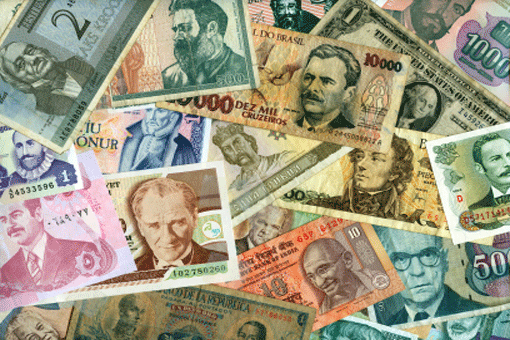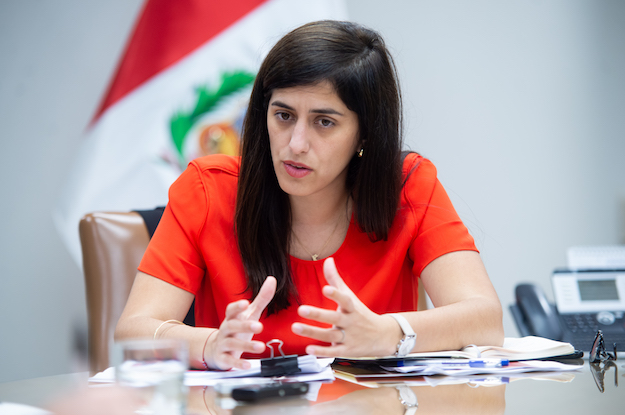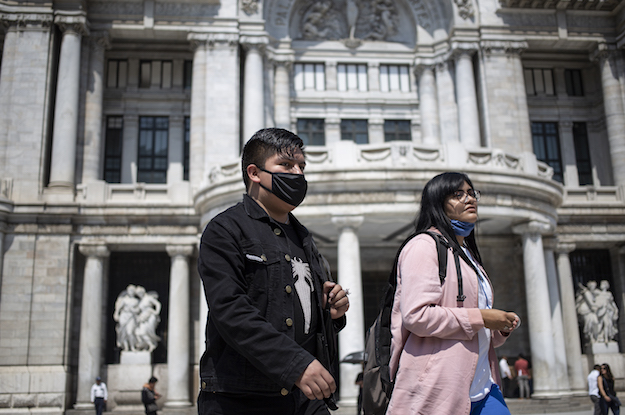Has the financial crisis provided the push Latin America needs to expand sovereign wealth? For a while, it was possible to imagine that the region’s hard-won prosperity over the past decade, gained from harvesting the fruits of the earth from soya to copper had provided Latin America with a comfortable cushion in the form of central bank reserves and sovereign wealth funds to do it easily.
But ironically, the de-leveraging of the global financial system over the past six months has once again brought to the surface historical fears about the lack of economic diversification and, in particular, concerns about dependency on primary resources and on foreign capital. It may be just the spark necessary to talk about the fiscal and long-term economic benefits of sovereign wealth funds without the intoxicating effects of high commodity prices and outsized ambitions.
Because the truth is, if created and managed effectively, sovereign wealth funds may well provide the means to smooth the boom and bust cycle of Latin American economies that have plagued the region—and will define this economic crisis.
Clearly, no single Latin American country has suffered the plight of Russia’s cataclysmic ruble devaluation, and the hemisphere’s commercial banks have not suffered the toxicity nor excessive leverage that plague their counterparts in the U.S. and Europe. But as the independently floating currency regimes of Brazil, Chile, and Mexico have come under duress, central banks have had to intervene. One can only wonder about the survivability of the fixed peg regimes of the Bahamas and Venezuela.
Latin America accounts for a meager 0.4 per cent of the total global assets of the world’s top 37 Sovereign Wealth Funds (SWFs), even though they produce almost half the world’s soybeans and copper and almost ten percent of the world’s oil. The rationale for sovereign wealth, or the conversion of physical wealth into financial wealth in the context of developmental policy, is not new in Latin America: central bank reserves have been the predominant beneficiaries of this wealth (as are non-commodity-wealth-based Asian funds). With the signs of a serious economic downturn beginning to show in the region, it is worth understanding the role of such wealth as a tool for economic diversification and productivity enhancement, as well as a source of stabilization of raw material prices, and a guarantee of long-term economic viability in the face of material resource depletion in countries such as Mexico, Trinidad and Tobago, and Venezuela.
Before the Fall
In 1994 and 1999 Mexican and Brazilian Central Banks reserves bordered on depletion as they vigorously defended their currencies against selling pressure. After these panic filled years, both countries pursued a policy of floating their currencies. To back the policy they focused on rebuilding their reserves to ensure the viability of their financial systems and international credibility. Since 2003, those reserves tripled. And their management has been conservative and liquid—in fixed income, and generally in U.S. Treasuries. Before the current crisis, most of the hemisphere’s sovereign wealth funds were stabilization funds primarily focused on consumer oil price stabilization and fiscal stabilization.
Good governance, institutional accountability, transparency, and congressional oversight are all necessary attributes in an effective sovereign wealth program. State ownership alone does not guarantee that resource revenues will be used for the public good, particularly in a region with an average GDP per capita of $5,000 and where significant segments of the population live on $2 per day.
For example, Ecuador and Venezuela, both increasingly dependent on oil revenue, have diverted revenues from Petroecuador and PDVSA to their central banks into various funds on a discretionary basis. This is contrary to the statutes that established them, and the complex rules that guide them, and did not ultimately invest in their ailing infrastructures and refining capacity. Furthermore, moves by the leaders of both countries—President Hugo Chávez’s politicization of the Central Bank and Ecuadorian leader Rafael Correa constitutional changes –have not only further tightened the state’s grip on strategic industries but effectively eliminated any vestige of checks and balances and respect for institutional independence.

Even before the crisis, the more responsibly managed economies, such as Chile, were already armed with a plan. The collapse of banks such as Bear Stearns and Lehman Brothers only demonstrated the inherent risks of relying solely on investment banks. In their wake went the strategy of the non-transparent, autocratic efforts of governments to bet on markets.
The Chilean model now comprises two funds, one funded by copper the other by fiscal surpluses. In the crisis it has become a model in the region. It is run by an independent committee established in 2001 that advises the Ministry of Finance and sets output targets and the reference price of copper.
Unlike Argentina, Brazil, Colombia, Mexico, Peru, and Venezuela, all of whom have spent 77 per cent of the revenue boom since 2002, in the words of a recent Inter-American Development Bank Report titled, “All That Glitters Is Not Gold,” Chile has been praised for its fiscal management. As investment banks rush to downgrade the region’s 2009 GDP growth, Chile may generate respectable statistics as it taps its Economic and Stabilization Fund to fund a $4 billion stimulus plan approved by the Chilean Congress.
Mexico offers some reason for optimism. It seems to have modified its Byzantine oil revenue management practices following reforms enacted in 2006 that compelled PEMEX to pay up to a 10 percent tax on the value of its production when oil is above $22 per barrel. President Felipe Calderón, a former Energy Minister, understands that with nine years of reserves left in the aging Cantarell oil field, the seven energy reform bills signed in December will provide a necessary lifeline to its continued dependence on oil as its single largest revenue source. Nevertheless, while Mexico has spent $1.5 billion of its $5.6 billion Oil Stabilization Fund to fully hedge the 2009 price of oil and has sufficient coverage for 2009 amongst other more meager funds assisted by a weakened peso, its material export concentration remains a long-term liability.
As Mexico’s oil depletes, Brazil’s recent pre-salt discoveries, have not only fueled discussion of an oil fund but the creation of what has become a very controversial sovereign wealth fund, Fundo Soberano do Brasil (FSB). The fund—drawn from the windfall of the oil discovery—would support the competitiveness of the export sector, providing a new stimulus to Brazilian industrial policy. Economic forecasters are now expecting rate cuts from what is Latin America’s ‘Bundesbank’ by 300 basis points! Tension between the opposition and President Lula’s party was further exacerbated after funding was approved by presidential decree, circumventing Congress altogether.
Yes We Can….Maybe
The developments within Brazil, Chile, and Trinidad & Tobago are buttressed by what OECD Chief Economist Javier Santiso describes as the “silent arrival of the political economy of the possible.” In other words, the region’s economic ills can now be addressed by a more practical mix of economic orthodoxy and populist social policies. Perhaps Brazil may develop its own hybrid sovereign wealth model, one that meets its short to medium-term counter-cyclical objectives and long-term savings (such as Norway) as it seeks to become a significant net oil exporter, or it may be more symbolic of Brazil’s economic power projection and influence seeking foreign policy. The example of India’s policy to use its fiscal surplus to create an SPV that will finance infrastructure development projects has provided an example to Brazil. But neither country is an export-focused country—though the intent is there.
The more pressing challenge for a region that continues to be commodity dependent while facing declining output and refining capacity, tax evasion and demographic inequities, is what to do about sovereign wealth. There is ample evidence that SWFs can play an important role in diversification and long-term economic growth. Indeed the OECD and the World Bank have been at the forefront of sovereign stabilization funds, namely in Mexico and Ecuador to ensure funding gaps are met—but more so to promote institutional development and long-term economic viability and policy continuity. To ensure this wealth is available for future generations, there must be competent and effective management, proper accountability, transparency, and investment diversification amongst multiple asset classes. An appropriate lesson can be drawn from the Gulf Cooperation Council countries, Norway, and Singapore, all of whom, despite generally poor performance in 2008, are projected to have strong long-term results.
Building financial wealth requires the proper balance of public-private partnerships, and of state and private enterprise with separation of powers and proper oversight. The recent financial crisis should provide a much-needed catalyst for the reexamination of macroeconomic structural inefficiencies and for strengthening the institutions necessary to promote counter-cyclical policies during expansions and anti-cyclical policies during contractions.
In this realm, there is much work to be done. Some continue along the wrong path and are paying the consequences. Venezuela’s pegged exchange rate regime and runaway inflation of over 30 per cent is forcing it not only to nationalize food processors but, with oil well below its original 2009 $60 target (recently lowered to $40), to scale back the government’s petro-fueled social welfare and regional projects, such as its planned refineries in Ecuador, Nicaragua and Panama.
In all of this talk, the story of Mexico’s expropriation of foreign oil companies in 1938 is apocryphal. The policy, launched by then president Lázaro Cárdenas was to ensure that Mexico’s natural resources would benefit all of its citizens. History, though, has proven that such resource nationalism has failed to deliver the promised enrichment of the general population. Furthermore, Central Bank Governor Ewart S. Williams, in a speech to the South Trinidad Chamber of Commerce on September, 20, 2007 (7), stated that, “The credibility of the HSF (Heritage and Stabilisation Fund) depends importantly on the degree of transparency and information disclosure that is practiced.” Establishing that transparency and independence—crucial to providing long-term benefits to citizens—means taking it out of the sole discretion of the state. Let’s hope that citizens and public fund managers are listening.





